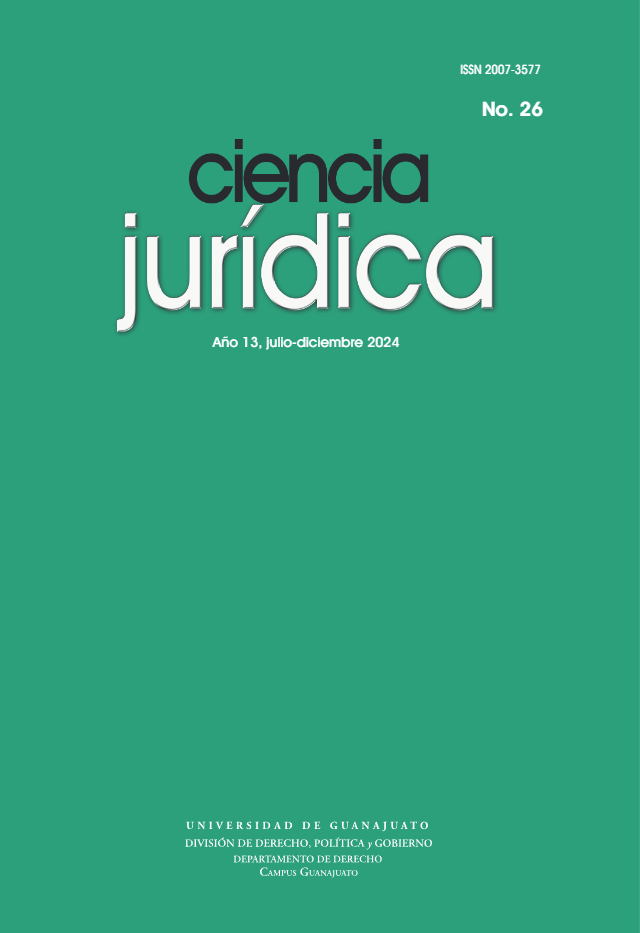Abstract
The purpose of transferring persons sentenced abroad is to effectively achieve the social rehabilitation or reintegration of those individuals who have been sentenced in a State of which they are not nationals, so that they may serve their sentence in the State of their origin or in which they habitually reside. For them to be transferred, a series of requirements must be met, as contemplated either in the international conventions signed by the States involved (the one that condemns and the one that will receive its national to serve the sentence) or in the National Law on Penal Enforcement (LNEP), when there is no such convention. Foreign persons deprived of their liberty in compliance with a sentence imposed on them constitute a vulnerable group within another that represents a sector whose human rights are frequently violated. Therefore, their repatriation to the State of origin to serve their sentence is a human right that every State must guarantee, so it is not surprising that it is contained in both the Political Constitution of the United Mexican States (CPEUM) and in various international conventions, both bilateral and multilateral.
References
GARCÍA RAMÍREZ, Sergio, “Comentario Artículo 18” en Derechos del pueblo mexicano: México a través de sus constituciones. Volumen VII Sección Tercera, 9ª ed., México, Miguel Ángel Porrúa, 2016.
______, La Constitución y el sistema penal: 75 años (1940-2015), México, Instituto Nacional de Ciencias Penales, 2016.
______, La reforma penal constitucional (2007-2008) ¿Democracia o autoritarismo?, 2ª ed., México, Editorial Porrúa, 2009.
______, Los derechos humanos y el sistema penal, México, SEPSETENTAS, 1976.
INEGI, Encuesta Nacional de Población Privada de la Libertad 2021. ENPOL, Principales resultados, México, 2022, disponible en: https://www.inegi.org.mx/contenidos/programas/enpol/2021/doc/enpol2021_presentacion_nacional.pdf (fecha de consulta: 3 de marzo de 2024).
LARA ESPINOSA, Diana, Grupos en situación de vulnerabilidad, CNDH, México, 2013, disponible en: http://ru.juridicas.unam.mx/xmlui/handle/123456789/13667 (fecha de consulta: 3 de marzo de 2024).
MALO CAMACHO, Gustavo, Derecho penal mexicano, quinta edición, México, Editorial Porrúa, 2003.
NASH, Claudio, “Artículo 5. Derecho a la Integridad personal”, en Steiner, Christian y Uribe, Patricia, Convención Americana sobre Derechos Humanos comentada, México, Suprema Corte de Justicia de la Nación, Konrad Adenauer Stiftung, 2015, disponible en: https://www.corteidh.or.cr/tablas/30237.pdf (fecha de consulta: 4 de mayo de 2024).
OJEDA VELÁZQUEZ, Jorge, Derecho constitucional penal, México, Editorial Porrúa, 2005.
ROXIN, Claus, Derecho penal. Parte general. Tomo I Fundamentos. La estructura de la Teoría del Delito, trad. de la 2ª ed. alemana por Diego-Manuel Luzón Peña, Miguel Díaz y García Conlledo y Javier de Vicente Remesal, Madrid, Civitas, 2007.
Tesis: P./J. 85/2009, Semanario Judicial de la Federación y su Gaceta, t XXX, agosto de 2009, disponible en: https://bj.scjn.gob.mx/doc/tesis/MPVpMHYBN_4klb4HseLB/%22Desarrollo%20social%22 (fecha de consulta: 3 de marzo de 2024).
WISNER, Ben et al, At risk: natural hazards, people´s vulnerability and disasters, 2a ed. Routledge, Londres, 2004, disponible en: https://www.preventionweb.net/files/670_72351.pdf (fecha de consulta: 3 de marzo de 2024).

This work is licensed under a Creative Commons Attribution-NonCommercial-ShareAlike 4.0 International License.
Copyright (c) 2024 Leandro Eduardo Astrain Bañuelos , Susana Martínez Nava

